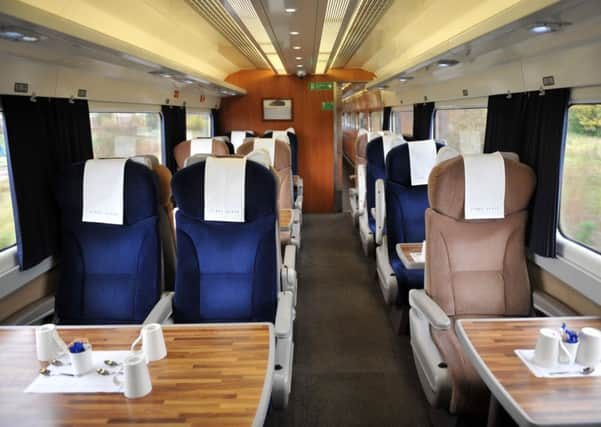Scott Reid: A return to glamour for Flying Scotsman?


What can be glamorous about being herded into an unheated/overheated carriage only to have your senses assaulted with incessant mobile ring tones, inane conversations and noxious food odours? Tolerable, perhaps, for a short commute but tantamount to torture on a longer journey.
Fortunately, my daily commute entails no more than placing one foot in front of another, while owning a car has negated the need to take to the tracks, except on the rarest of occasions. One of those occasions was last week, after deciding that to get to York and back in a day in the unpredictable depths of winter was best done with someone else at the controls.
Advertisement
Hide AdAdvertisement
Hide AdAll told, East Coast did a commendable job. At £59, the standard return ticket cost was not unreasonable, given that the booking was undertaken just two days in advance. Both the outward and inward journeys ran to within a couple of minutes of the advertised timings. Every member of staff encountered was courteous and friendly. Even the tea and slice of fruit cake was palatable. Yet something was missing. Something that certainly existed in the golden age of rail travel in the 1920s and 30s, and was even revived around the turn of the millennium while GNER had its hands on the flagship route linking Scotland with London.
Perhaps it’s too much to expect that sense of occasion or glamour amid the cut and thrust of the 21st century, where so many things are commoditised and bereft of human interaction. Yet, long-distance services such as the Eurostar link with the Continent and a host of other inter-Europe connections prove that it is possible to offer a taste of how things used to be.
We are just days away from a new franchise holder taking on the prestigious Flying Scotsman route. The launch of Virgin Trains East Coast – in actual fact 90 per cent owned by Perth-based Stagecoach – marks the re-privatising of the operation. Over the past few years, the taxpayer-owned venture has made a decent fist of running the show, increasing journey numbers and revenues while returning hundreds of millions of pounds to the public coffers.
Most users would agree that the service has improved markedly since the dark days of 2009 when financial fallout and dispute dominated under the auspices of incumbent National Express.
The decision to take the East Coast franchise back into the private sector will remain contentious, but it is time to move on.
Certain aspects associated with the romance of rail travel are intangible and may stem from spending a little too long peering misty-eyed at the locos, carriages and memorabilia in York’s railway museum. Other areas are more palpable, like replacing ageing rolling stock, improving lighting and decor and reintroducing a proper restaurant car accessible to all. Lovers of rail will be putting a great deal of faith in the Stagecoach/Virgin pact. «